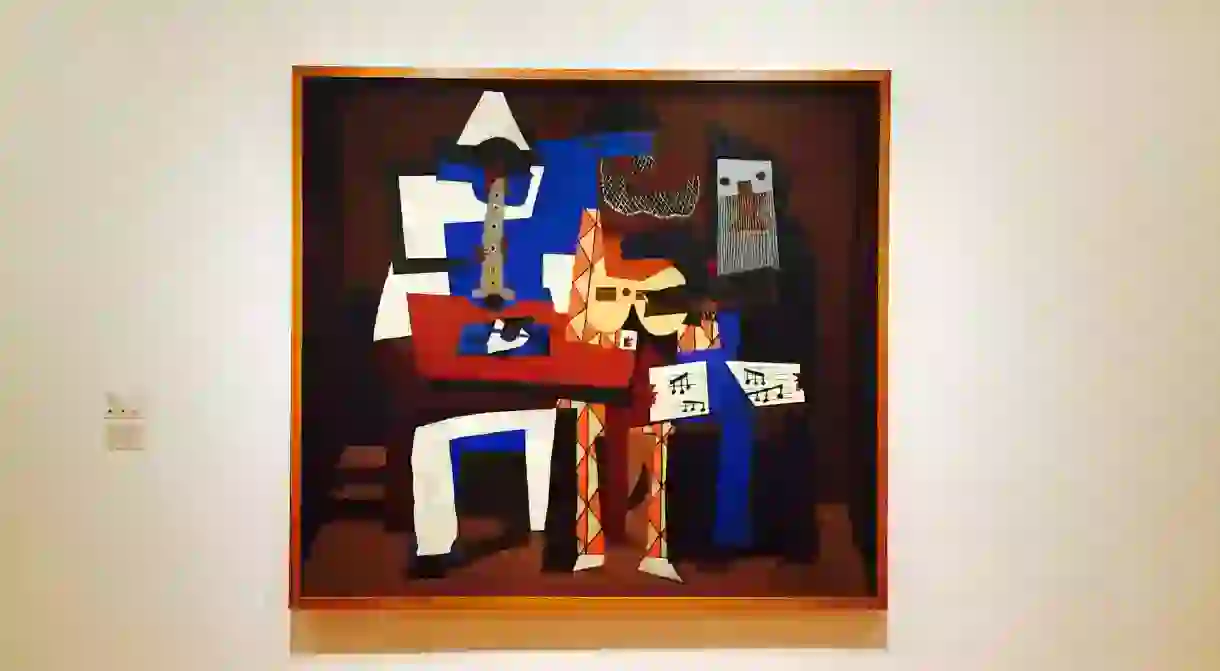Baya Mahieddine | The Young Artist Who Inspired Picasso

One of Algeria’s most celebrated artists, Baya Mahieddine is famous for the iconic work that would inspire Picasso to paint a collection called Women of Algeria. As a self-taught artist, Baya retained the connection to ‘tribal’ art that so fascinated the Western world, and actively rejected any form of classification, instead drawing on personal memories and experiences.

Born in Algeria in 1931, Baya’s life was far from easy. Orphaned at the age of five, she was raised by her grandmother. Unable to attend school, she worked as a servant for a French woman named Marguerite Camina, who would later be described by the artist as her adoptive mother. Camina noticed the talent that her young servant displayed in making figures from clay, and encouraged her to develop her craft. Instead of following the typically Western models of art production that were being taught at the time, the young Baya drew on her own personal experiences and imaginings, alongside the traditional tribal art of Algeria.
Sharon Obuobi describes Algeria’s visual culture as boasting ‘intricately designed traditional textiles, ceramics, gardens, and architecture’, and these motifs reoccur in Mahyeddine’s paintings. Her clay figures are said to have inspired the fluid forms and figures she painted, giving her works their unique aesthetic that was so influential to artists like Picasso and Matisse.

By the time she was 16, Mahyeddine had her first exhibition in Paris. This is where her influence on artists such as Picasso is first noted. Picasso’s interest and fascination with African tribal art (and masks in particular) is well known. His graphic cubist style is attributed in part to his curiosity in traditional African forms of representation, at that time presented in Europe in the form of curios and artifacts rather than artworks. Mahyeddine was an exception to this. She was not creating tribal curiosities, but allowing her environment and imagination to shape her work.
Inspired by her spontaneity and natural talent, Picasso invited her to work with him in 1948. She was the elusive ‘untaught’ artist that gave Picasso fresh perspective. Picasso’s Women of Algeria series is said to be inspired by Mahyeddine, although it was painted after their time spent working together. Just as the young Mahyeddine’s influence on Picasso is evident, his influence is felt in many of her works. According to Sotheby’s ‘Picasso nurtured Baya’s aesthetic – particularly her use of color and line, while Baya’s cultural vitality served as creative lifeblood for Picasso’.
Like Picasso, Andre Breton was greatly inspired by Baya’s work. He found the bold colors and strange figures of her works revealed surrealist and dream-like qualities. He defined her work as Surrealism, and this view was widely held for a long time. Modernist critics used surrealist ideas of dream-like figures and the fascination with ‘naive’ art as a lens through which to view Mahyeddine’s work. This mindset is attributed to the problematic viewpoints at the time, which were ‘dominated by orientalism and the exoticisation of the world that Baya, the woman and artist, came from’.
But the artist refused to define herself using the terminology of the Western canon. She created work that was deeply personal, rooted in her childhood and her home. As Sana Makhoul asks in her research paper on the artist, ‘Why do we have to define and categorize artwork from non-Western cultures by imposing on them Western definitions and terminology?’
Baya married celebrated Andalusian composer Mahyeddine Mahfoudh in 1953. He’s credited with inspiring many of the instruments that appear in her works, as well as what many people see as the melodious and harmonious atmosphere that her works seems to evoke.
One year following her marriage to Mahfoudh, Baya stopped painting, only returning to her artistic practice in the late 1960s. The reasons attributed to this break vary; some say it was to show solidarity with the revolution in Algeria, others that it was to raise her children. Whatever her reasons, the hiatus was temporary. From the 1960s on she continued to create works until the end of her life. Her rich, opulent paintings combine influences of traditional Algerian art, like ceramics and bold wall murals, with flowing figures and objects. Birds and animals combine with objects like instruments and fruit to create works that seem to be laden with symbolic meaning. Her pieces don’t follow any rules, continually denying the classifications forced onto them.
In the late 1990’s, nearing the end of her successful artistic career, Baya was amongst many Algerian artists that the French colonisers attempted to ascribe to French culture. Instead, she is credited for resolutely proclaiming her Algerian identity, evidenced by her refusal to leave the country during political instability, despite an invitation from France. Braving political and social instability, Baya could not bear to leave the home that had inspired her joyous paintings. She was an Algerian artist at heart – clearly the only personal and artistic classification she was happy with. She died in 1998, and remains a celebrated artistic figure around the world.













